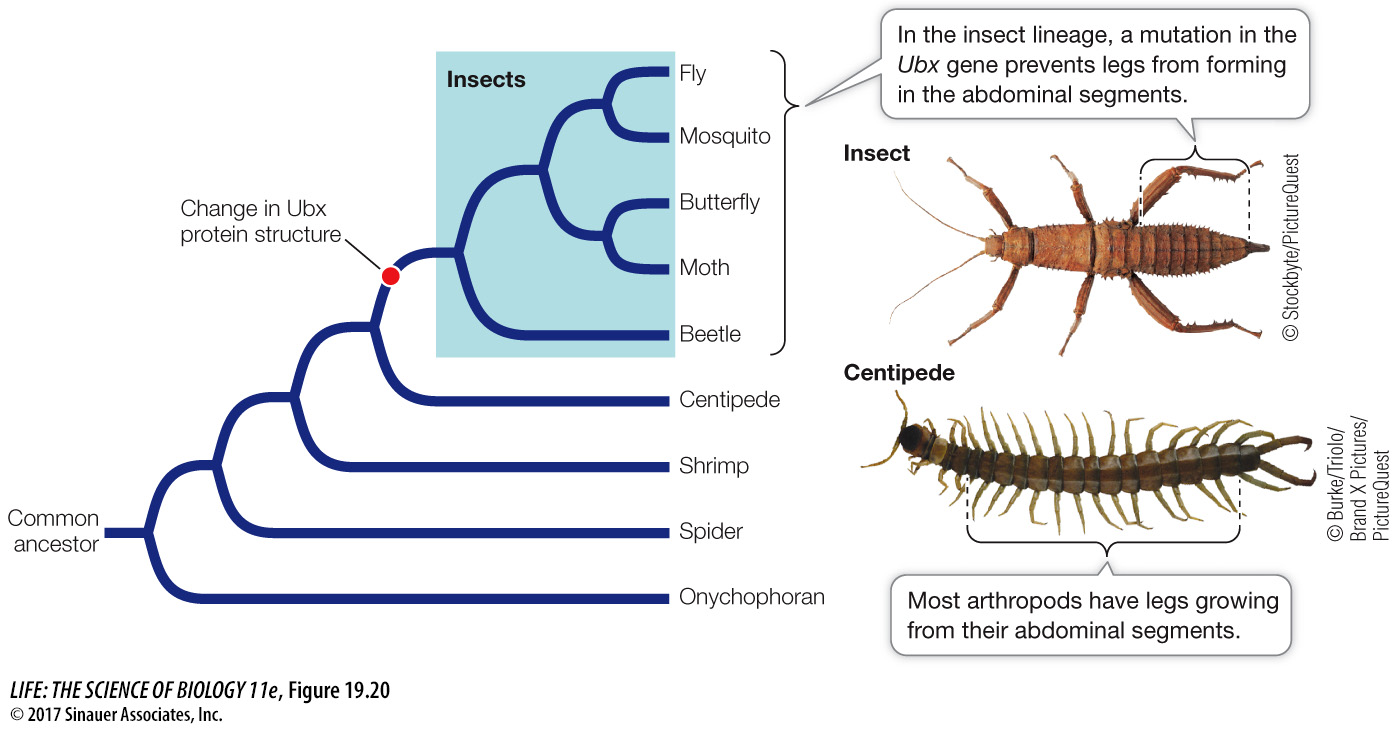Sometimes a major developmental change is caused by an alteration in the regulatory molecule itself rather than a change in where, when, or how much it is expressed. The gene that controls the number of legs in arthropods offers an excellent example. Arthropods all have head, thoracic, and abdominal regions with variable numbers of segments. Insects, such as Drosophila, have three pairs of legs on their three thoracic segments, whereas centipedes have many legs on both thoracic and abdominal segments. All arthropods express a gene called Distal-less (Dll) that controls segmental leg development. In insects, Dll expression is repressed in abdominal segments by the Hox gene Ubx. Ubx is expressed in the abdominal segments of all arthropods, but it has different effects in different species. In centipedes, Ubx is co-expressed with Dll to promote the formation of legs. During the evolution of insects, a mutation in the Ubx gene sequence resulted in a modified Ubx protein that represses Dll expression in abdominal segments. A phylogenetic tree of arthropods shows that this change in Ubx occurred in the ancestor of insects, at the same time that abdominal legs were lost (Figure 19.20).

Figure 19.20 A Mutation in a Hox Gene Changed the Number of Legs in Insects In the insect lineage (blue box) of the arthropods, a change to the Ubx gene resulted in a protein that inhibits the Dll gene, which is required for legs to form. Because insects express this modified Ubx gene in their abdominal segments, no legs grow from these segments. Other arthropods, such as centipedes, produce an unmodified Ubx protein and do grow legs from their abdominal segments.
